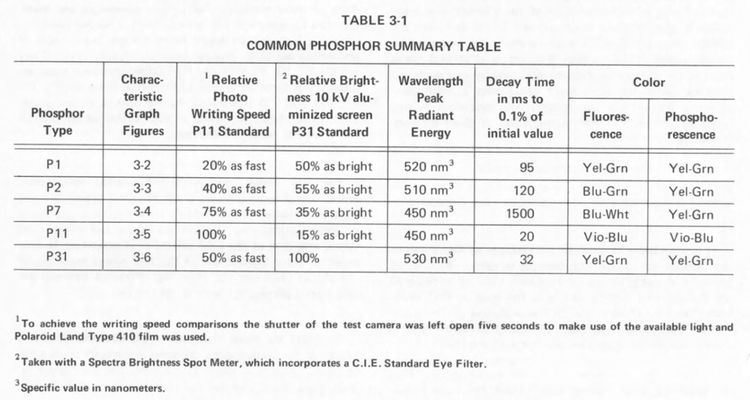Phosphor
In a context of chemistry, or when referring to cathode-ray tubes, phosphor refers to any of various compounds of transition metals or of rare earths that exhibits phosphorescence. This is not to be confused with the chemical element phosphorus (symbol P, atomic number of 15) which emits light due to chemiluminescence, not phosphorescence.
CRT phosphors were standardized beginning around World War II and designated by the letter "P" followed by a number. In most early scopes, the standard phosphor was P-2. By the late 1950s, P-31 became dominant in general-purpose applications, while the blue P-11 phosphor was common for scopes primarily used with photographic recording.
The choice of phosphor for a CRT is based on the intended application of the instrument. The phosphor affects:
- trace color
- maximum trace brightness
- trace width
- persistence time
- writing rate
- resistance to burns
Links
- Visual demonstration of different phosphor types' behavior @ YouTube
- Table of CRT Phosphors
- Tektronix Circuit Concepts: Cathode Ray Tubes (see chapters 9 through 16)
- C50 series camera manual, pages 3-1 to 3-7 - detailed data on P1, P2, P7, P11 and P31 phosphors
Documents Referencing Phosphor
| Document | Class | Title | Authors | Year | Links |
|---|---|---|---|---|---|
| Tekscope 1970 V2 N5 Oct 1970.pdf | Article | Easier Waveform Photography | 1970 | Phosphor • C-50 • C-51 • C-70 |



